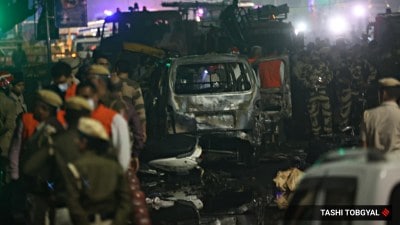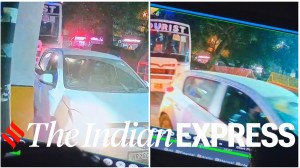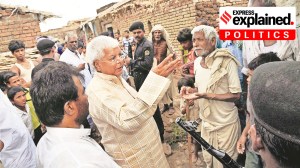A roll call for victims of identity
Over two months after Godhra, the process of identifying victims has begun. In the forefront is the Forensic Science Laboratory (FSL), that ...

Over two months after Godhra, the process of identifying victims has begun. In the forefront is the Forensic Science Laboratory (FSL), that will compare blood samples of about a dozen people with the 70-odd DNA samples it collected after riots.
Last week, the blood samples of about 10 to 12 people, whose relatives have been missing since February 28, were collected and sent to FSL, that will randomly match these with the DNA samples in the laboratory.
Dr Jayant Vyas, FSL director, who is in the process of extracting DNA samples from the bodies that were charred beyond recognition, is hopeful of establishing the identity of some of the dead by next week. Civil Hospital Superintendent Dr Anil Chaddha says they had received 100-odd unidentified bodies of which only 20 could not be identified.
FSL deputy director Dr J K Dave says the laboratory has received over 70 DNA samples in the last two-and-a-half months and the process of finding controls — a technical term for relatives of unidentified person — is on.
‘‘We have samples in the form of skin tissue, hair strands or bone marrow, from which we have extracted DNA. This sample has to be compared with the DNA sample of a blood relative, whom we call control. Unless we have the controls, we can’t establish the identity,’’ Dr Dave says.
Of the 70-odd DNA samples with FSL, 19 belong to victims of the Godhra carnage while the rest are from Naroda-Patiya, Chamanpura and other areas from the city.
Of 19 DNA samples of Godhra carnage, FSL has found 15 controls. ‘‘The Railway Police are investigating the cases and have a list of missing people and claimants, which they have provided to us,’’ says an FSL official.
However, the process is tedious and pressure on FSL is ‘‘abnormally high.’’ ‘‘It takes four weeks to extract the DNA sample from the tissue, so there’s definitely a lot of pressure,’’ says Dr Vyas. FSL is working with police who identify those missing in particular pockets. ‘‘We have received 10-12 control samples from various pockets and are extracting DNA samples. Matching DNA with relative’s blood will take place later,’’ the official says.





Nov 10: Latest News
- 01
- 02
- 03
- 04
- 05


























